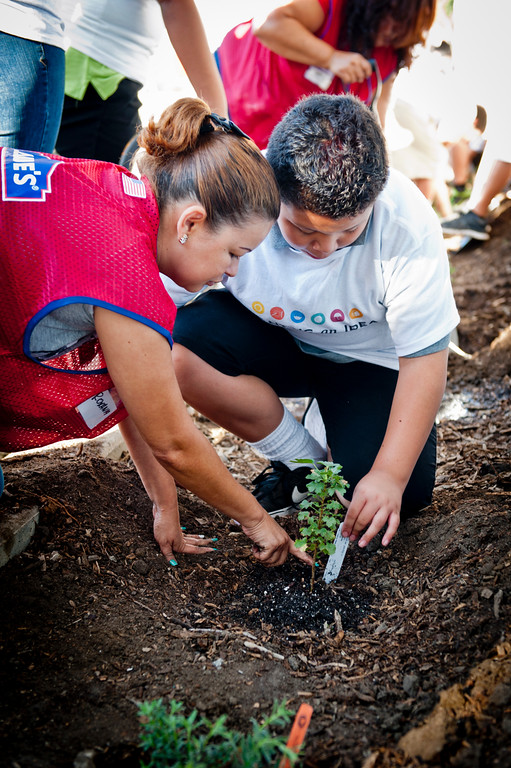Text by Brigitte Griswold, Director of Youth Programs, The Nature Conservancy. For the original article, click here.
Last month, President Obama released federal guidelines to curb standardized testing in public schools—limiting it to a maximum of 2% of classroom time—a bold call to action stemming from ongoing complaints from teachers, students, and parents that too much emphasis has been put on teaching to the test, with little evidence that it’s paying off in terms of improved student achievement. As an environmentalist that works with youth, I’m especially interested to hear this news, and not just because of the number of trees that will be saved from becoming score sheets for students to fill in their bubble answers. According to a study by the Council of Great City Schools, students in public schools in our nation’s largest cities take a whopping 112 mandatory standardized tests before they graduate. Just imagine how that amount of school time could be repurposed.
[Photo] ECMS-I students transform their campus into a living ecosystem.
Imagine if we could re-introduce outdoor time for youth as part of the school day, redefine our educational outcomes to really focus on student civic and community engagement, and empower today’s youth – the largest and most diverse generation in history – to lead us to a solutions-based approach to some of the most daunting environmental challenges facing the world today. Today’s youth are solutions-driven, optimistic about the future, and are volunteering their time and energy to causes they care about at an overwhelming rate of 70% – much higher than the adult population. They are the drivers of much of the environmental change we need to see in the world.
I got a glimpse of what the future could look like a couple of weeks ago at a small school in Inglewood, California, called Environmental Charter Middle School. Just steps away from some of the most congested freeways in Los Angeles, this school is working in partnership with The Nature Conservancy to create an inspiring and interactive living campus that brings learning to life while also serving as a model of sustainable living and ecological design for the entire community. On October 21st, together with Lowe’s Heroes volunteers from Hawthorne, Torrance and Burbank and the Theodore Payne Foundation, we worked to empower students to address a local environmental challenge affecting their community. I watched these students transform a concrete parking lot outside their school into a vibrant green space, bringing the benefits of nature to the greater community. By rolling up their sleeves and getting their hands dirty to plant drought-resistant plants native to Southern California, the students not only created a rich outdoor learning lab, but took action to make a difference in their neighborhood and help address issues of water scarcity – a challenge that the entire city of Los Angeles is grappling with.
[Photo] Loews Employees and ECMS-I students work hard at building a beautiful garden.
While this may seem like a drop in the bucket in the large scale effort needed to address the issues of drought affecting much of our western states, just imagine if every school district followed suit, modeling for the city and schools across the country how we can mobilize a new generation in implementing the natural solutions needed to curb climate change impacts and restore nature to our largest cities. That would certainly be a win for the planet. Ongoing access to green school campuses would be a win for our nation’s youth as well. Studies consistently show that access to nature and green space can help students be more successful in and outside of the classroom—improving concentration, problem-solving skills, self-esteem and, yes, even those hotly-debated standardized test scores. For more information on bringing school gardens to more of our nation’s schools, visit natureworkseverywhere.org.









